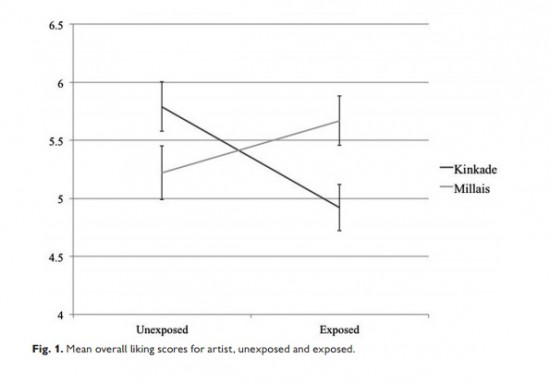Right-wing party seeks way back to gold standard
By Agnese Smith, July 8, 2011, 4:12 a.m. EDT
(http://www.marketwatch.com/Story/story/print?guid=E7C9F392-A8BA-11E0-AAD1-002128049AD6)
ZURICH (MarketWatch) — The Swiss Parliament is expected later this year to discuss the creation of a gold franc — a parallel currency to the official Swiss franc, with the fringe initiative likely triggering a broader debate about the role of the precious metal in the Alpine nation.
The initiative is part of “Healthy Currency,” a campaign sponsored by politicians from the right-wing Swiss People’s Party (SVP) — the country’s biggest — that is seeking to capitalize on popular fears about global financial turmoil and inflation to reverse the government’s current policy on gold.
“I can imagine that this will spark some sort of debate about gold and there may be some pressure to accept the parallel currency,” said Dr. Gebhard Kirchgaessner, an economics professor at St. Gallen University. “But it won’t have any real effect on the economy. It seems incredible to imagine that there are people out there willing to buy millions of these things.”
Switzerland, which in 2000 became one of the last countries to decouple its currency from gold, is not the only place to contemplate a change in the precious metal’s role amid controversy over government involvement in the economy. In March, Utah became the first state in the U.S. to legalize gold and silver coins as currency, while similar legislation was considered in Montana, Missouri, Colorado, Idaho and Indiana.
“I want Swiss people to have the freedom to choose a completely different currency,” said Thomas Jacob, the man behind the gold franc concept. ”Today’s monetary system is all backed by debt — all backed by nothing — and I want people to realize this.”
A good part of the enthusiasm for gold, which provokes strong emotion among many who invest in it, has to do with its price: the yellow metal has more than quadrupled during the last decade and now stands at more than $1,500 per ounce.
In the U.S., legislation to allow a gold currency is largely symbolic — a protest against what many consider irresponsible spending by central governments to recharge economies. But according to Jacob, the gold franc has a more practical goal: giving small investors the opportunity to safeguard their investments against global uncertainty.
Modest investors face several hurdles to investing in the precious metal, said the 50 year-old Jacob, a former pilot and currently a sales coach at Zurich Financial Services Group. Collecting coins, bullion and gold certificates typically requires professional advice and even the smallest coin costs around 100 francs. One of the new gold francs, on the other hand, with a gold content of 0.1 grams, could be purchased for just 5 francs (at current prices).
While there is evidence that investing in gold is increasingly popular in Switzerland and other countries, the idea of establishing a gold franc is not foremost on the minds most ordinary Swiss, some of whom still find the subject of gold uncomfortable given the country’s association with precious metals looted in World War II.
“I got rid of my coins a while ago,” said Esther Heusser, a social worker in Jona, Switzerland. “I just didn’t want to think about where they came from.”
The real problem
Very few have even heard of the initiative. The rising Swiss franc, which has jumped 16 percent in two years against the euro and the dollar thanks to its safe haven status, is a much wider concern.
This “is the real problem and it is clear that neither the [Swiss National Bank] nor the government have anything really meaningful against it,” St. Gallen’s Kirchgaessner said. “We might have a real crisis in a couple of years.”
Indeed, the strong franc has clipped corporate earnings of many exporters and has lead to some painful restructuring. Because of the ongoing global financial crisis, investors here and abroad are seeking a safe haven from economic uncertainty and inflation, which Switzerland’s low debt and firm economic footing provides. High gold reserves have also helped.
Jacob doesn’t think the adoption of the gold franc would increase the value of the official currency. “In fact, it would take pressure off,” he speculates.
Like the Swiss franc, gold has jumped for many of the same reasons, even though the Swiss National Bank and other central banks decided to dump the metal after two decades of underperformance against other financial instruments.
Strong demand from China has also helped push gold prices to records. Gold enthusiasts — so-called gold bugs — many of whom see stock markets as no better than gambling casinos and central banks as money printing machines — are rejoicing.
“Buying gold has been the best method for shorting the government,” wrote Shayne McGuire late last year. McGuire, who has predicted that gold could soar to $10,000 an ounce, manages the $500 million GBO Gold Fund for Teacher Retirement System of Texas.
“I strongly believe that present financial conditions are about to transform the investment strategies of the world’s largest investment funds in a way that will cause gold to surge substantially higher,” McGuire wrote in an essay on the metal.
Large reserves
Switzerland still holds a large amount of the precious metal. The alpine country of 7.7 million residents holds 1,040 tons worth about $46 billion, almost as much as China, according to World Gold Council figures. It ranks seventh in its league table, with the US at the top.
In terms of gold reserves per person, it stands at just over $6,000, number one by nearly twice the amount of the next largest hoarder, Lebanon (over $3,000) and nearly six times as much as the US ($1,000), according to The Economist newspaper.
But this is not enough according to the “Healthy Currency” movement.
The SVP, which also wants to limit the autonomy of the Swiss National Bank after it posted big losses trying to tamp down the franc, plans to start collecting signatures for a ballot initiative in mid August, according to Jacob. The party is demanding that the central bank stop any further bank sales, repatriate Swiss gold reserves held abroad, and not allow the proportion of its gold to fall below 20% of its total assets. The campaign is also calling for the country’s withdrawal from the IMF.
Jacob, who claims to have no affiliation with the SVP other than the currency initiative, admits that the success of his gold franc campaign is linked to the amount of publicity the Healthy Currency initiative manages to muster at the end of the summer. “It would definitely put the parallel currency on the agenda,” he said.
And it will be no easy feat. The passage of the legislation will require an amendment to the Swiss constitution and the country is not particularly well known for a reckless pace of change. If rejected, a popular vote — where ordinary Swiss people have their say — is planned, probably in mid 2012, according to Jacob.
If approved, licensed financial institutions can then issue the coins, using their official logo on one side with the other, an easily recognizable Swiss gold franc emblem, Jacob said. The initiative foresees strict regulation by the government to ensure gold content and authenticity.
Even if popularized, the gold coins are unlikely to be in use for commercial reasons as the volatility of gold prices make this unpractical.




